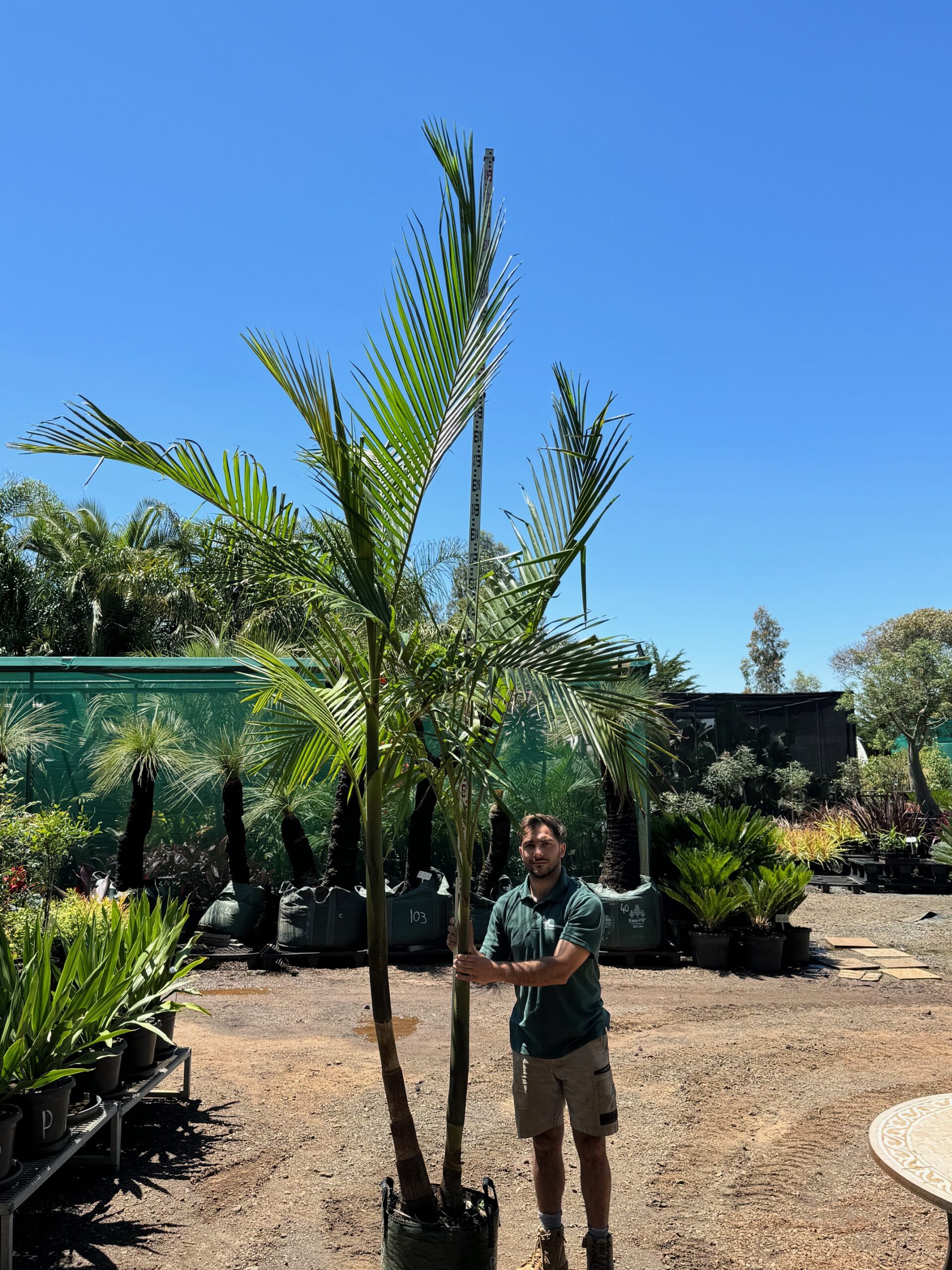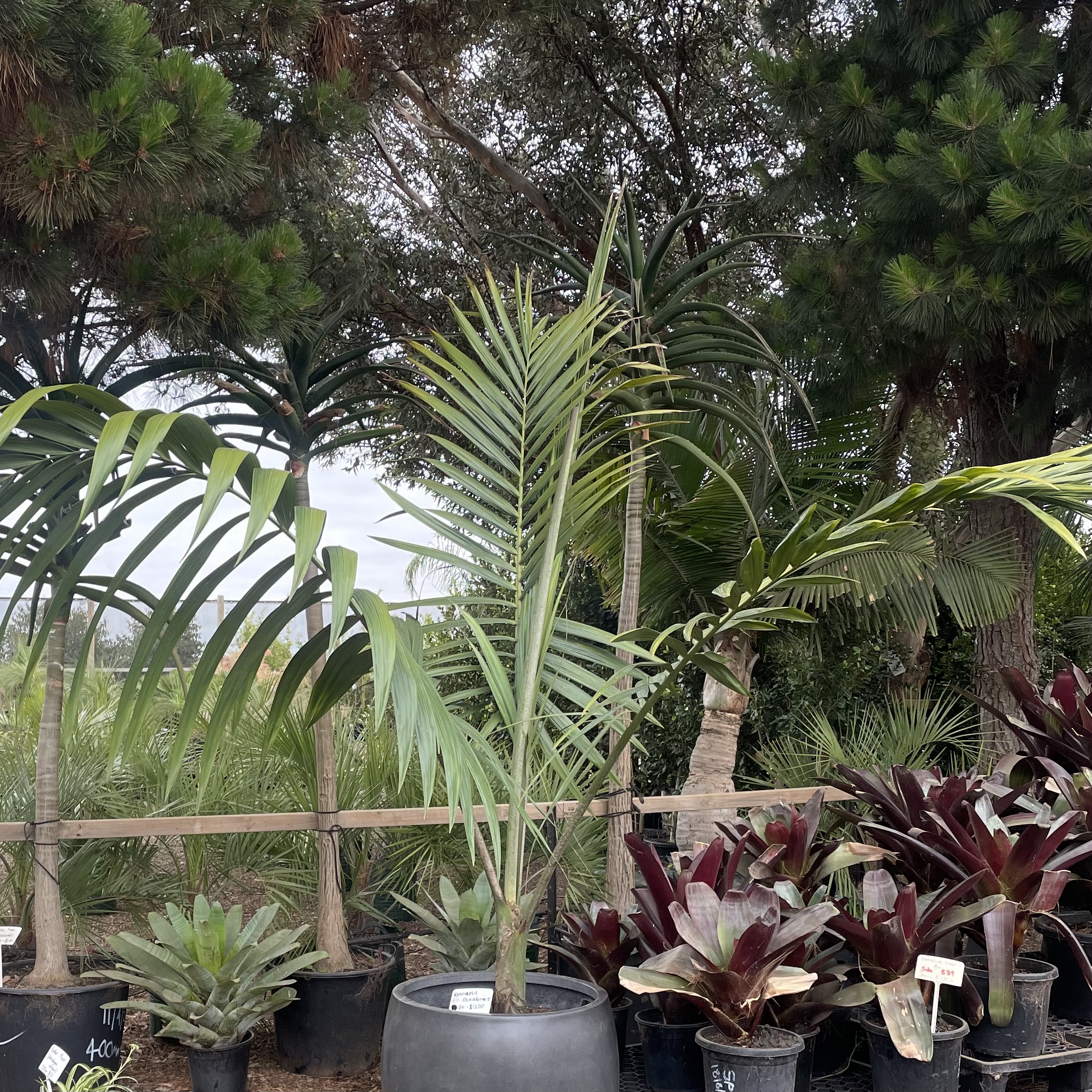A Step-by-Step Guide
Materials Needed:
- Bangalow Palm plants
- Shovel or garden spade
- Organic compost
- Mulch
- Watering hose or drip irrigation system
- Pruning shears
- Fertilizer (optional)
- Gloves (optional)
Planting Bangalow Palms:
1. Site Selection:
- Choose a suitable location for your Bangalow Palms. They thrive in well-draining soil and prefer partial to full sunlight. Ensure there is enough space for the mature height and spread of the palms.
2. Soil Preparation:
- Prepare the soil by digging a hole or trench for each palm. The depth and spacing will depend on the size of your Bangalow Palm plants. Ensure the soil is well-draining.
3. Planting:
- Gently remove the Bangalow Palm plants from their containers and place them in the prepared holes, making sure they are at the same level as they were in their containers.
- Backfill with soil and tamp it down gently to remove air pockets.
- Water thoroughly after planting to help settle the soil around the roots.
4. Mulching:
- Apply a layer of organic mulch around the base of each palm to retain moisture, suppress weeds, and regulate soil temperature.
5. Watering:
- Keep the soil consistently moist, especially during the first few months after planting. Bangalow Palms require regular watering for proper establishment.
Maintaining Bangalow Palms:
1. Pruning and Shaping:
- Prune your Bangalow Palms as needed to remove dead or damaged fronds. Avoid over-pruning, as it can stress the palms.
- Remove any spent flower spikes and seeds if desired, as they can be messy.
2. Fertilization (Optional):
- If your palms show signs of nutrient deficiency, consider applying a balanced, slow-release palm fertilizer in spring and summer. Follow the manufacturer’s instructions.
3. Pest and Disease Control:
- Keep an eye out for common palm pests such as scale insects, mealybugs, or palm aphids. Use appropriate insecticides or treatments if necessary.
- Monitor for fungal diseases, particularly during wet periods. Treat promptly with fungicides if symptoms appear.
4. Regular Inspections:
- Regularly inspect your Bangalow Palms for signs of stress, disease, or pest infestations. Early detection can help prevent problems from spreading.
5. Watering:
- As your palms become established, you can gradually reduce the frequency of watering. Allow the soil to dry slightly between waterings.
- Ensure deep watering to encourage the development of a strong root system.
6. Renewing Mulch:
- Periodically replenish the mulch layer to maintain its effectiveness.
7. Seasonal Care:
- Adjust your maintenance routine to the changing seasons, taking into account temperature, rainfall, and growth patterns.
Bangalow Palms are resilient and can thrive with relatively low maintenance. With proper care, they will provide a lush and tropical appearance to your landscape.




